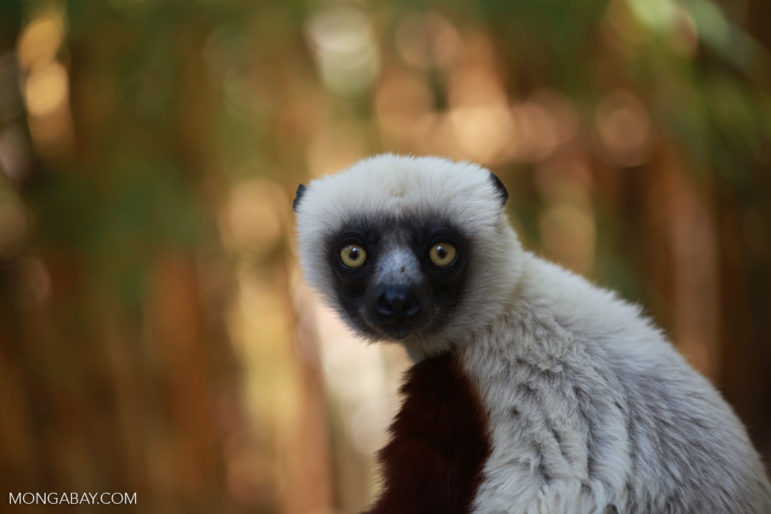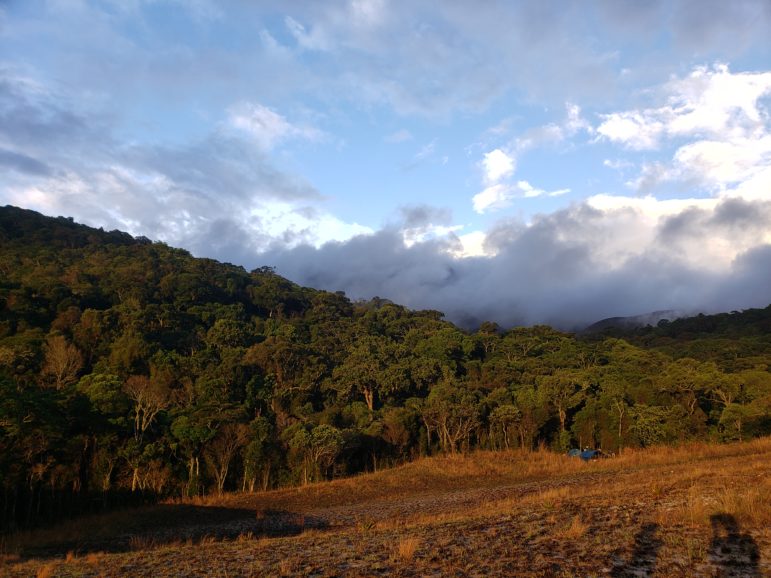
Ivobihoro community members participating in forest restoration with The Phoenix Conservancy executive director Chris Duke.
When The Phoenix Conservancy (TPC) came across a 2018 Mongabay article by contributor Rowan Moore Gerety, they had no idea it would lead to monumental changes for their organization, the environment and the local communities of Madagascar.
A long history of Madagascar coverage
Mongabay has a long track record of reporting on environmental issues in Madagascar, with the first articles being published in 2005. In fact, Mongabay’s ties to the island nation run deeper. The name “Mongabay” was chosen by CEO and Founder Rhett Butler and inspired by Nosy Mangabe, an island off the coast of eastern Madagascar, home to enormous biodiversity, including aye-aye, jeweled Mantella frogs, chameleons, geckos, coral reefs, and breeding humpback whales.
To read more about Mongabay’s coverage of Madagascar, click here.
What is The Phoenix Conservancy?
Founded in 2016, The Phoenix Conservancy is a non-governmental organization (NGO) with a mission to restore endangered ecosystems globally for the communities that depend on them and the conservation of biodiversity. The organization searches for the world’s most endangered ecosystems with 10% or less of the original ecosystem intact.
The story that sparked the flame

Coquerel’s sifaka (Propithecus coquereli), a species that lives in Madagascar’s Bongolava Forest Corridor. Photo by Rhett A. Butler.
In 2018, TPC’s main criteria in selecting an ecosystem prime for restoration was the ability to make an impact due to their null startup budget. Around this time, their team discovered the article “Abandoned by their sponsors, Madagascar’s orphaned parks struggle on.”
The story details how a dozen protected areas created amid the rapid buildup of Madagascar’s conservation sector were later abandoned by their NGO sponsors after the political crisis of 2009. One of these was Conservation International, which left its Bongolava Forest Corridor project in 2012. In addition, the report touched on how a group of local conservationists aimed to fill the void left by the NGOs to prevent more of the protected area from evaporating under pressure for new farmland.
The lost forest

The Ivohiboro forest. Photo courtesy of The Phoenix Conservancy.
The article gave TPC Executive Director Chris Duke an understanding of the gap left on the island. In turn, Duke contacted Mongabay to discuss his interest in adopting one of the abandoned protected areas in Madagascar. Mongabay Director of Partnerships Dave Martin connected Duke with Dr. Patricia C. Wright, founder and executive director of Centre ValBio at Stony Brook University, who had recently led an expedition to a little-known remnant forest, known locally as Ivohiboro or Ivohibory.
Wright affectionately dubbed “the lost forest” due to its isolation, obscurity, and her team’s documentation of several rare or endangered species, including a unique population of ring-tailed lemur, a species not typically associated with montane rainforest, Madagascar crested Ibis, signs of fossa, and more even two unidentified lemur species.
Despite its biodiversity, Ivohiboro was threatened by forest fires. Satellite data from Conservation International determined they threatened forest areas without natural fire barriers. This data served as a foundation for TPC, whose annual budget increased to $2,400 to formally adopt and begin restoring Ivohiboro in mid-2018.
Fire prevention and forest restoration

Local community members and Chris Duke working on forest restoratin. Photo courtesy of The Phoenix Conservancy.
By 2019, TPC had raised enough funds for Duke’s first trip to the forest to establish initial contacts and scout the region. While on his visit, he learned several lessons that helped shape their strategy, including the importance of community involvement and benefit in restoration and the need for redundancy in firebreaks.
These principles guided their initial proposals for major funding, which contributed to establishing two lines of doubled firebreak along the parts of the forest, devoid of protection by rock outcroppings.
Following the initial construction of firebreaks in 2019, TPC’s focus shifted to active restoration in the protected areas. Most importantly, they developed a novel technique called “foxhole forests” that maximized the efficiency of restoration funds without traditional nursery-transplant facilities, which have high seedling mortality rates.
This strategy seeded with economically-valuable pioneer species purchased directly from local community members. All the pioneer plants also produced fruits and pulses for local consumption, in addition to high-value local commodities, such as marula oil.
Like a phoenix from the ashes
Since TPC began its endeavor in Ivohiboro, they have built more than 50 kilometers (31 miles) of firebreak between the forest and the valley floor, and implemented more than 200 foxhole forests. The project has resulted in employment for more than 6,000 local people, who can earn supplemental income and play an active, leading role in restoring their forest.
“Perhaps most significantly, local attitudes towards firesetting have shifted from within the communities themselves, without explicit effort by TPC to alter cultural attitudes,” says Duke. “Our local partners reported that being involved from the beginning of the effort had shown the local communities the value of Ivohiboro, and they had largely stopped setting fires in the first place.”
A seed planted by independent journalism
Fast forward to 2021, and TPC’s annual budget has multiplied to $100,000, almost entirely in the last two years. They attribute this growth primarily to their work in Ivobihoro as evidence to restoration supporters.
Duke credits Mongabay’s story on protected areas in Madagascar for the circumstances that led to TPC’s success in Ivobihoro.
“This entire chain of events can be directly attributed to a single Mongabay article and the connections that resulted from those first conversations,” says Duke. “Without Mongabay as an initial catalyst, it is unlikely that TPC or Ivohiboro would have as bright of a future today, or even exist at all.”
Support independent environmental journalism
If you are interested in helping shed light on conservation stories such as this one, there are two excellent ways you can do so with Mongabay. First, consider making a donation, which directly helps us continue to produce high-impact journalism from nature’s frontline. Second, subscribe to Mongabay’s newsletter to get the latest environmental news delivered right to your inbox.
Also, consider signing up for The Phoenix Conservancy’s newsletter here.
About Mongabay
Mongabay is a nonprofit environmental science and conservation news platform focused on providing cutting-edge independent journalism from nature’s frontline. We pride ourselves on producing reporting that has substantial, tangible impacts around the world.